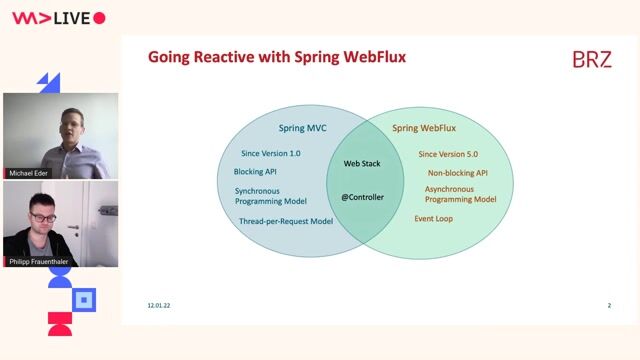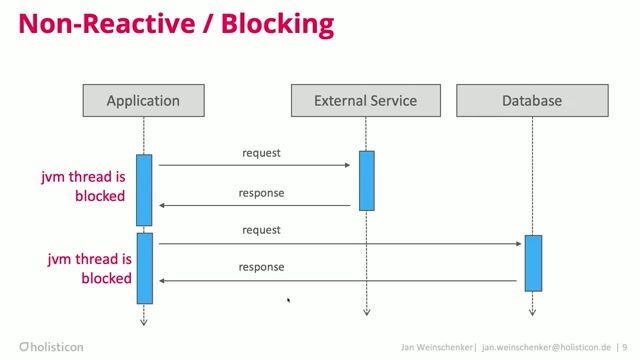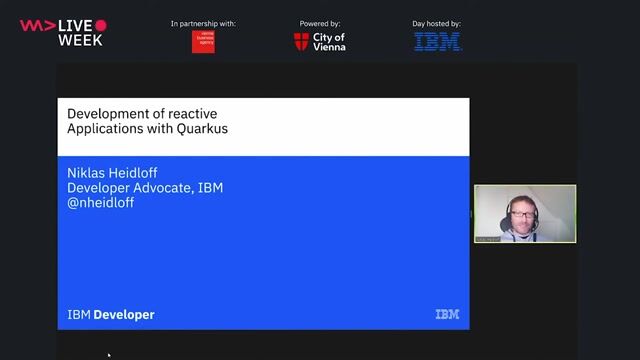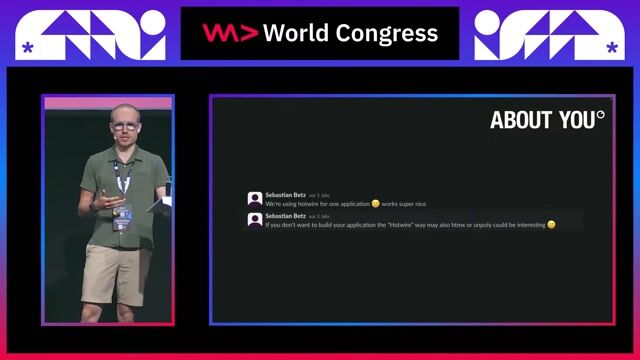Lukas Georgieff & Alberto Gisbert
Slip Through the Boundaries of Legacy Systems with Kotlin and Spring WebFlux
#1about 5 minutes
Building efficient services for legacy system environments
Traditional synchronous architectures struggle with slow legacy systems, creating a need for more resource-efficient reactive approaches.
#2about 5 minutes
Comparing WebFlux and MVC performance under memory constraints
A load test demonstrates that Spring WebFlux handles ten times more requests than Spring MVC with the same limited memory, highlighting its superior efficiency.
#3about 11 minutes
Exploring asynchronous I/O with the publisher model
The core of reactive programming is the publisher model, which avoids blocking threads by using asynchronous I/O and callbacks instead of waiting for data.
#4about 11 minutes
Managing data flow with backpressure and reactive streams
Backpressure combines pull and push models to prevent overwhelming consumers, a core concept formalized by the Reactive Streams specification.
#5about 3 minutes
Implementing reactive streams with Project Reactor's Mono and Flux
Project Reactor provides concrete publisher types like Mono for 0-1 items and Flux for N items, along with a rich set of operators for manipulating data streams.
#6about 4 minutes
How to effectively test reactive publishers
The StepVerifier class in Project Reactor provides a robust way to test asynchronous code by verifying emitted signals, data, and completion states over time.
#7about 6 minutes
Avoiding common pitfalls with nulls and empty publishers
Reactive streams do not permit null values, and empty publishers can cause silent failures in operators like zip, requiring careful handling.
#8about 3 minutes
Understanding assembly time versus subscription time
Failing to distinguish between when a reactive pipeline is defined (assembly time) and when it executes (subscription time) can lead to unexpected eager evaluations.
#9about 4 minutes
Navigating the complexities of caching reactive streams
Standard caching annotations cache the "cold" publisher definition, not the result, requiring the use of operators like .cache() to create a "hot" source that replays the value.
Related jobs
Jobs that call for the skills explored in this talk.
tree-IT GmbH
Bad Neustadt an der Saale, Germany
€54-80K
Intermediate
Senior
Java
TypeScript
+1
MARKT-PILOT GmbH
Stuttgart, Germany
Remote
€75-90K
Senior
Java
TypeScript
+1
Matching moments

03:28 MIN
Shifting from talent acquisition to talent architecture
The Future of HR Lies in AND – Not in OR

06:51 MIN
Balancing business, technology, and people for holistic success
The Future of HR Lies in AND – Not in OR

06:04 MIN
The importance of a fighting spirit to avoid complacency
The Future of HR Lies in AND – Not in OR

06:10 MIN
Understanding global differences in work culture and motivation
The Future of HR Lies in AND – Not in OR

06:59 MIN
Moving from 'or' to 'and' thinking in HR strategy
The Future of HR Lies in AND – Not in OR

05:10 MIN
How the HR function has evolved over three decades
The Future of HR Lies in AND – Not in OR

03:13 MIN
How AI can create more human moments in HR
The Future of HR Lies in AND – Not in OR

04:22 MIN
Navigating ambiguity as a core HR competency
The Future of HR Lies in AND – Not in OR
Featured Partners
Related Videos
 54:18
54:18Going reactive with Spring WebFlux
Michael Eder & Philipp Frauenthaler
 25:41
25:41Side-by-Side: Reactive vs non-reactive Java
Jan Weinschenker
 40:32
40:32Back(end) to the Future: Embracing the continuous Evolution of Infrastructure and Code
Matthias Falkenberg & Timo Knapp
 39:10
39:10Development of reactive applications with Quarkus
Niklas Heidloff
 58:05
58:05Our journey with Spring Boot in a microservice architecture
Michael Eder & Philipp Frauenthaler
 57:09
57:09Route from Java to Kotlin
Christian Woerz
 29:04
29:04Why HTMX is crushing React, Vue & Svelte.
Felix Eckhardt & Benedikt Stemmildt
 41:06
41:06Rethinking Reactive Architectures with GraphQL
David Leitner
Related Articles
View all articles


.webp?w=240&auto=compress,format)
From learning to earning
Jobs that call for the skills explored in this talk.




WeMatch GmbH
€65-90K
Java
Vaadin
Kotlin
Microsoft SQL Server


Schwarz Dienstleistung KG
Raum Weinsberg GVV, Germany
Java
Scrum
Kotlin
PostgreSQL

Schwarz Dienstleistung KG
Raum Weinsberg GVV, Germany
Java
Scrum
Kotlin
PostgreSQL

Achter Autohaus Software GmbH
Remote
Intermediate
Java
JUnit
MySQL
React
+8

Schwarz Dienstleistung KG
Raum Weinsberg GVV, Germany
Senior
Spring
Kotlin
Continuous Integration